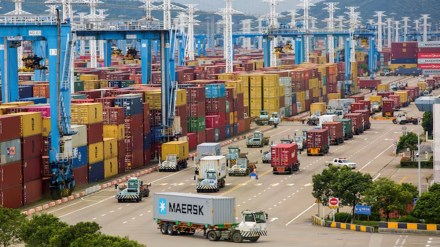With the US unveiling a plan to have a “fair and reciprocal” approach comprising tariff and non-tariff steps vis-à-vis its trading partners and setting a tight April 1 deadline for studying “each affected country one by one,” India will have to put its counter-strategy on the fast track, trade experts said.
While financial services firm Nomura and others warned Trump’s reciprocal tariffs could end up hurting India, China and Thailand the most among the Asian countries, “with India standing out as having much higher relative tariff rates,” trade experts here expressed mixed opinions. While some said reciprocal approach could turn out to be “highly problematic” because of the “variables” involved, others noted that given the differences in the export profiles of the US and India, product-to-product reciprocal tariffs might not have a significant impact.
New Delhi could even escape major import duty escalation in the US for products of export interest to it and reap some benefits if the US approach is to “level the levies product-wise,” according to some experts.
The lack of details of the Trump administration’s plan and how it intends to achieve the goals has some analysts worried. The plan may be to address all disadvantages that American businesses face globally ranging from digital services tax to non-tariff barriers including subsidies, and burdensome regulatory requirements. Exchange rate management, wage suppression and even local taxes could be on the radar, they noted.
“Reciprocal tariff is a highly problematic issue because there are many variables which the US could take into account while deciding their customs duty. Import duty is just one variable,” Abhijit Das, an expert in international trade said.
Experts are also cautious about the announcement of an early conclusion of mutually beneficial trade agreement during the meeting between Trump and Prime Minister Narendra Modi. India has not been comfortable negotiating a bilateral trade pact with the US in the past even though it is engaging with other developed economies like UK, European Union, Japan and even Canada in the past.
“From the US, the demands are high involving agriculture, intellectual property, government procurement etc. This is the reason India has held back in the past,” acting president and distinguished professor at Council for Social Development Biswajit Dhar said adding that “it (trade poact) is not in India’s interest”.
“We seem to be in a very accommodative mode. If we do not speak out now we will be in trouble. Countries like Canada that have spoken out or talked of retaliation have seen suspension of tariffs and start of negotiations,” he added.
According to some analysts if tariffs by the US are decided at the product to product level, India is well covered. “Given the differences in the export profiles of the two countries, product to product reciprocal tariffs may not have a significant impact. For example, if the US charges 50% reciprocal tariffs on Indian pistachios because India charges the same, India is happy as it does not export pistachios,” founder of Global Trade Research Initiative (GTRI) Ajay Srivastava said.
The average tariff on 75% of US exports to India is less than 5% while India faces high U.S. tariffs on many labor-intensive goods like textiles, garments, and footwear, ranging between 15-35% on several products. There is enough room in these products for adjustment from the US side.
“A very low share of India’s imports (by value) from the US have ‘high’ tariffs – 82% of India’s FY24 imports from the US had tariffs of 0-10%, while 15% of imports had tariffs of 10-20%. Just 3% of imports had tariffs higher than 20%,” an analysis by lead economist at Emkay Global Madhavi Arora showed.
The biggest hit for reciprocal tariffs could come to chemicals and transportation (automobiles). Gems and jewellery would be another sector that will be under pressure.
The second biggest export from India to the US is smartphones at $ 5.5 billion in 2023-24, just behind gems and jewellery. In the US items worth under $800 are duty free while those between $800 and $1,800 are subject to a 4% duty rate. India on the other hand imposes a duty of 15% on smartphones. The US, however, is not an exporter of these devices to India. Levelling the duty rates will not hurt India there.
The US must choose a criteria – product or sector – for transparent decision making else all the US efforts on MFN tariff cuts will end up benefiting China as it still is the largest global supplier of industrial goods, Srivastava said.
The problem could, however, arise if the tariffs are imposed sector wise instead of product wise. If the US goes ahead and decides to collect the same amount of duty on $ 77.5 billion dollars of India’s imports as it pays on $ 42.9 billion of exports, there will be an adjustment upwards of tax rates on Indian goods.
Experts see the announcement of reciprocal tariffs and other similar announcements as a move to open negotiations with trade partners. “The world seems to be falling in line. India will have to engage with the US, push our own export interests and also explain to Trump that reciprocal tariffs may end up hurting US consumers more ,” Das said.
